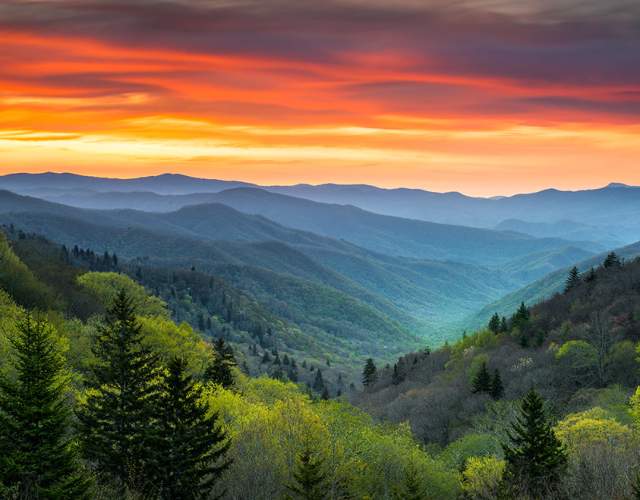Welcome to the Great Smoky Mountains National Park, a place where nature’s grandeur and human history intertwine. As you journey through this stunning landscape, imagine the ancient Appalachian temperate rainforest that stretches before you, a remnant of a world untouched by modern development. This park, which straddles the border between Tennessee and North Carolina, is a sanctuary for both biodiversity and historical narratives.
The story of the Great Smoky Mountains National Park begins in the late 19th century, when visionaries first dreamed of preserving this natural wonder. Unlike the establishment of earlier national parks, which often involved government-owned lands, the creation of the Smokies was a formidable endeavor. Private lands needed to be acquired, a task that required significant funding and negotiation.
In 1926, President Calvin Coolidge signed the bill that paved the way for the park’s creation. Yet, it was not until the early 1930s that substantial progress was made. The states of Tennessee and North Carolina, along with private donors, contributed millions to purchase land. The Rockefeller family, through the Laura Spelman Rockefeller Memorial Fund, matched this effort with a generous donation, securing the park’s future.
The park was officially chartered by Congress in 1934, and President Franklin D. Roosevelt dedicated it in 1940. This dedication was more than a ceremonial act; it marked the culmination of efforts by countless individuals. Among these were George Masa, a Japanese immigrant whose evocative photographs captured the public’s imagination, and Horace Kephart, a writer and advocate for the park’s creation. Their work was instrumental in rallying support and demonstrating the area’s natural beauty.
As you explore the park, you may tread the same paths as early European settlers and the Cherokee people, who have called these mountains home for centuries. The park preserves numerous historical structures from these communities, offering a glimpse into the lives of those who once lived here.
The park is also a testament to the impact of the Civilian Conservation Corps (CCC), a New Deal program that provided jobs during the Great Depression. The CCC played a crucial role in developing the park’s infrastructure, building trails, campgrounds, and other facilities that visitors enjoy today.
In 1983, the park was designated a UNESCO World Heritage Site, acknowledging its outstanding natural beauty and ecological importance. It is home to over 3,500 plant species and the greatest variety of salamanders in the world, making it a vital refuge for both flora and fauna.
Today, the Great Smoky Mountains National Park is the most visited national park in the United States, drawing over 12 million visitors annually. Its mist-shrouded peaks continue to inspire awe and appreciation for the natural world. Whether you’re hiking the Appalachian Trail, fishing in its streams, or simply taking in the views, the park offers a unique connection to nature and history.
As you leave, consider the park’s legacy: a symbol of conservation, a haven for biodiversity, and a reminder of the enduring human spirit that fought to preserve it for future generations.





